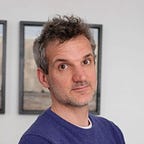Neighbors
History Shows the Tipping Point for Mass Murder is Closer Than You Might Think
It has always rings hollow to me when people are accused of “inhumanity” when they partake in organized murder.
Dehumanization is a very human phenomenon. We choose who of our kind must be relegated out of it. It starts in the denial of the full humanness of a people, lurking in generalizations, epithets and discriminations. It also proceeds any form of mass murder.
According to the philosopher David Livingstone Smith, dehumanization is a psychological mechanism that’s required to overcome the deep-seated inhibition to kill other human beings.
Dehumanisation is a long process that doesn’t often culminate in murder. But when it does lead to murder, it happens slowly, then all at once.
But even the “at once” of mass murder, when the threshold has been crossed, requires some performance to make it seem legitimate. Human beings construct rituals to murder at scale.
Some mark of guilt is ritually attached to those about to be scapegoated. They are forced to perform the fictional guilt that is foisted upon them.
When the people of Jedwabne murdered their Jewish neighbours in the summer of 1941, they forced them to do unusual things.
